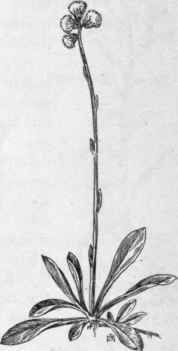Sweet, Or Common, Everlasting. Gnaphalium polycephalum, Michx. (Gnaphalium obtusifolium, L.). Old Field Balsam, Sweet White Balsam, Balsam Posy, Fragrant Everlasting, Many-headed Everlasting, Chafeweed
Description
This section is from the book "A Manual Of Weeds", by Ada E. Georgia. Also available from Amazon: A Manual Of Weeds.
Sweet, Or Common, Everlasting. Gnaphalium polycephalum, Michx. (Gnaphalium obtusifolium, L.). Old Field Balsam, Sweet White Balsam, Balsam Posy, Fragrant Everlasting, Many-headed Everlasting, Chafeweed
Native. Annual or winter annual. Propagates by seeds.

Fig. 308.- Field Cat's-foot (Antennaria neglecta). X 1/3.
Time of bloom: July to September. Seed-time: September to November.
Range: Nova Scotia to Manitoba, and southward to Florida and Texas.
Habitat: Old fields and pastures, open woods.
Although grazing cattle pass it by and it usurps the place of plants that they do like, yet it would be one country pleasure lost to us if this weed were entirely gone from the old fields and "brushlot" pastures which it frequents. Its fragrance is one of the most delightful of outdoor odors and it is very lasting.
Stem softly woolly, one to three feet tall, simple or branched at the top. Leaves alternate, oblong, very narrow, pointed, sessile, tapering toward the base, dark green and smooth above but densely white-woolly beneath, the margins slightly wavy. Heads very numerous, several panicled clusters growing on a plant. Each head is oblong, few-flowered, with pistillate florets in the outer rows, those in the center perfect; involucral bracts appressed, white and papery, sometimes tinged with brown, blunt-pointed, the outer row woolly at the base. Seeds smooth and very small, the pappus tawny yellow. (Fig. 309.)
Means of control.
Hand-pulling or close cutting while in early bloom will prevent seed development. Hoe-cutting of winter rosettes.
Continue to:


